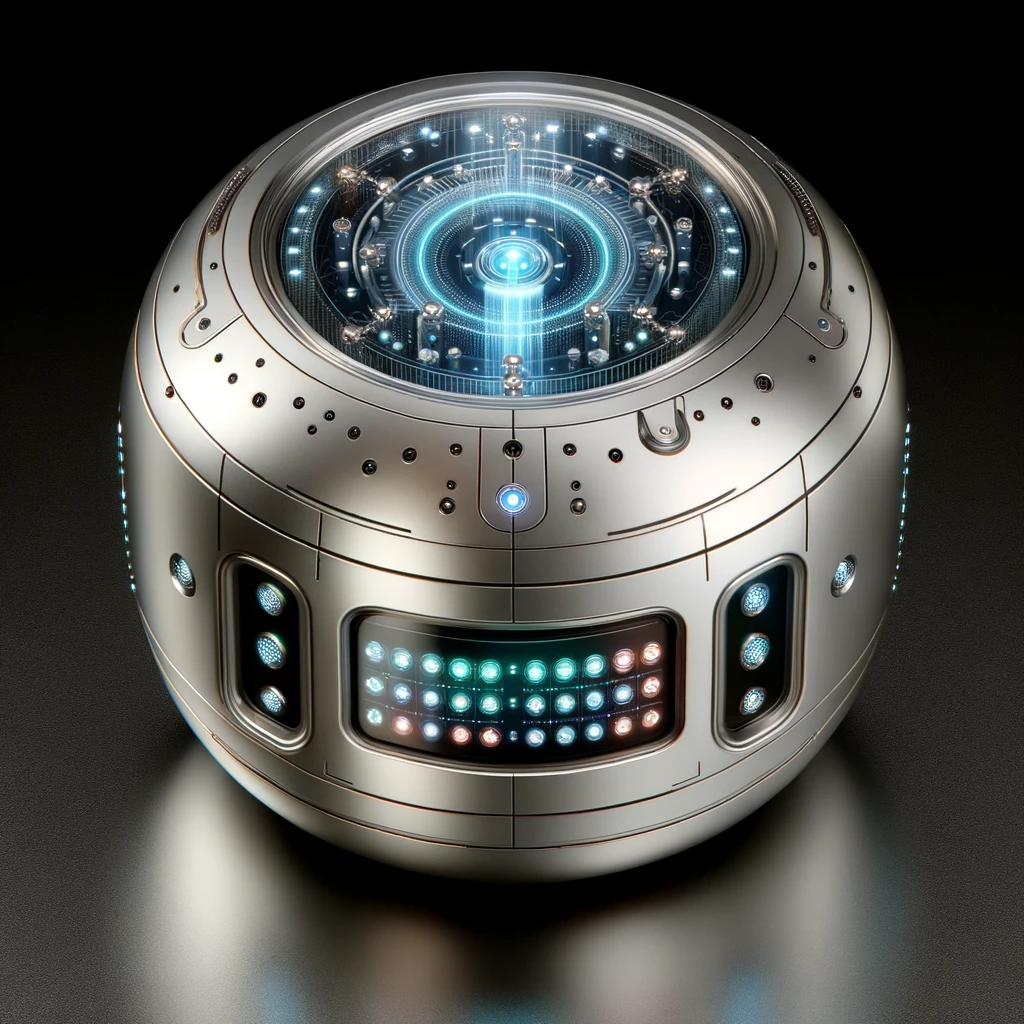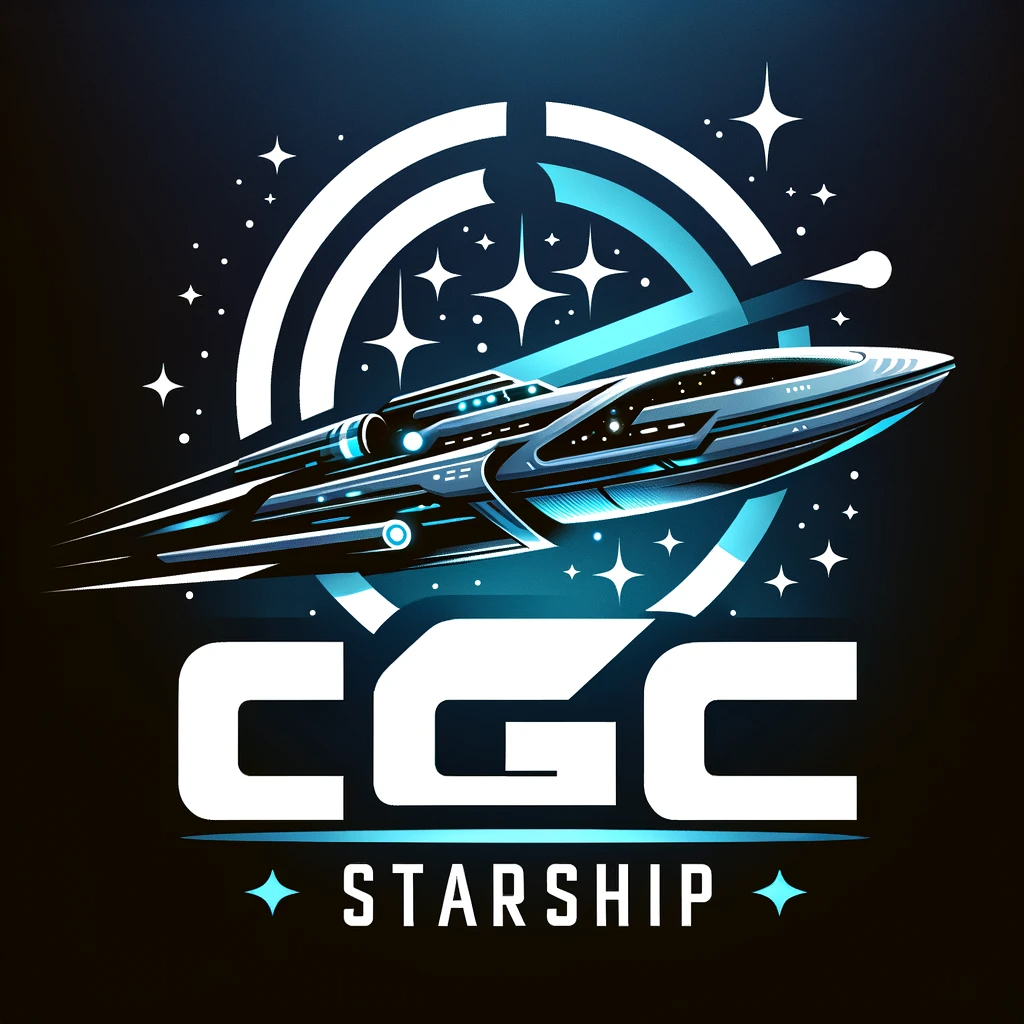CGC Design
The Cosmic Galactic Cruiser (CGC) is designed with two independently rotating rings that generate artificial gravity, enhancing the living and working conditions aboard the spacecraft. The outer ring, named “Enterprise,” has a radius of 60 meters and rotates at a fixed speed of 3.86 RPM, creating approximately 1g of gravitational force, mimicking Earth’s gravity. This design is pivotal for maintaining the health and wellbeing of the crew during long-duration space missions.
The inner ring, “Challenger,” features a smaller radius of 30 meters and offers adjustable rotation speeds. This flexibility allows for the simulation of various gravitational forces ranging from 0g to 5g. This capability is crucial for preparing the crew for landing missions on celestial bodies with different gravitational strengths, providing a versatile and effective environment for training and adaptation.
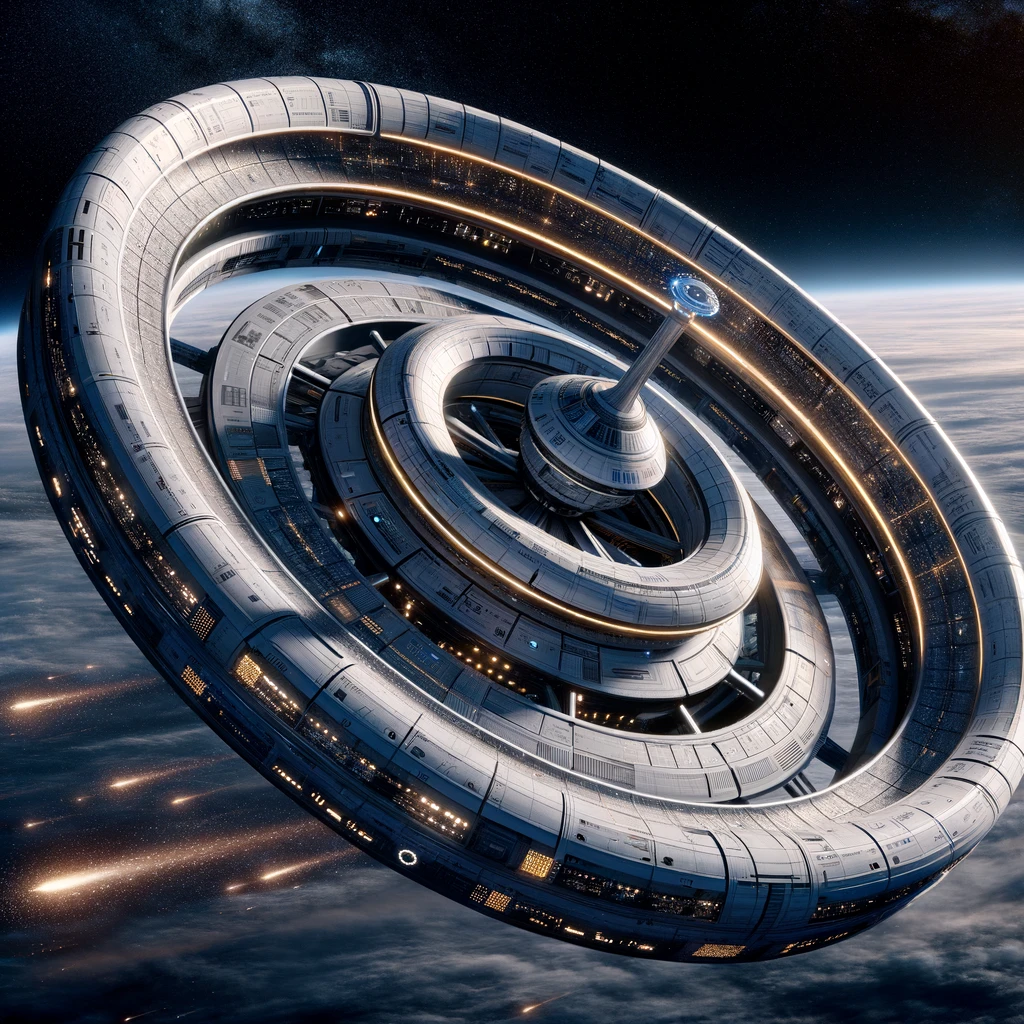
Stellarator drive
The CGC is equipped with a Stellarator drive, a fusion reactor that serves both as the propulsion system and the power supply for the spacecraft. Through continuous improvements, we have achieved the following speeds:
- 600,000 km/h
- 1,384,000 km/h
- 1,562,500 km/h (equivalent to 1/4 Astronomical Unit (AU) per day)
- 6,250,000 km/h (equivalent to 1 AU per day)
- 12,500,000 km/h (equivalent to 2 AU per day), which is our current maximum speed.
However, to reach our ambitious goals, including traveling through the Oort Cloud to Proxima b, these speeds are insufficient. With the support of HF, piloting the “Millennial Eagle” capable of Warp 12 speeds (based on a factor of 2, equating to 2048 times the speed of light), we have managed to achieve a maximum velocity of Warp 4 (8 times the speed of light) for the CGC, despite its size. This significant advancement in our propulsion capabilities marks a pivotal milestone in our journey through the cosmos.
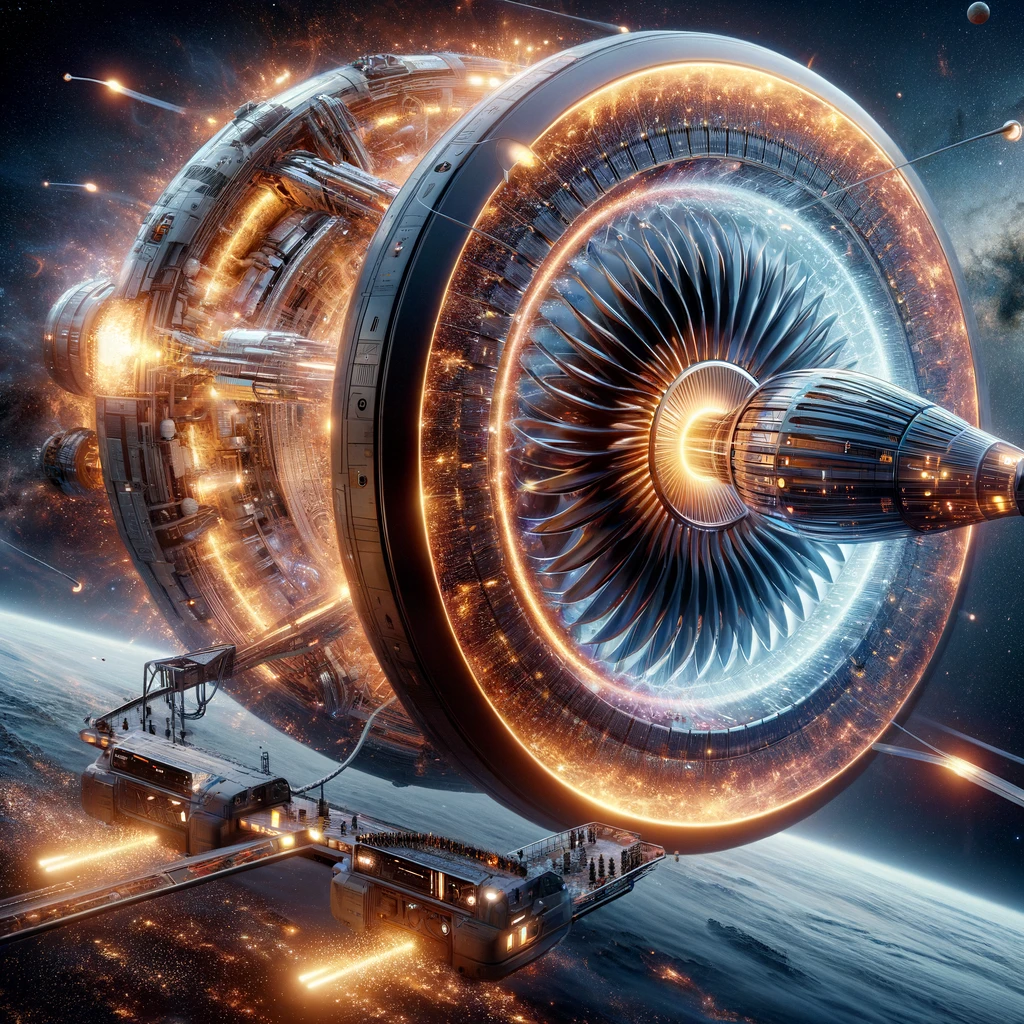
Tesla Generator
In addition to its primary functions, the Stellarator aboard the Cosmic Galactic Cruiser (CGC) also acts as a power source for our “Tesla Generator”. This innovative device enables wireless energy transfer, powering devices such as our cutting-edge Nano-Carbon space suits, and facilitating energy transmission to the surfaces of celestial bodies. For instance, we have successfully powered the “IceMole” on Enceladus using this technology. The Tesla Generator’s ability to provide wireless energy represents a leap forward in our exploration capabilities, allowing us to conduct operations and experiments in the far reaches of space with unprecedented ease and efficiency.
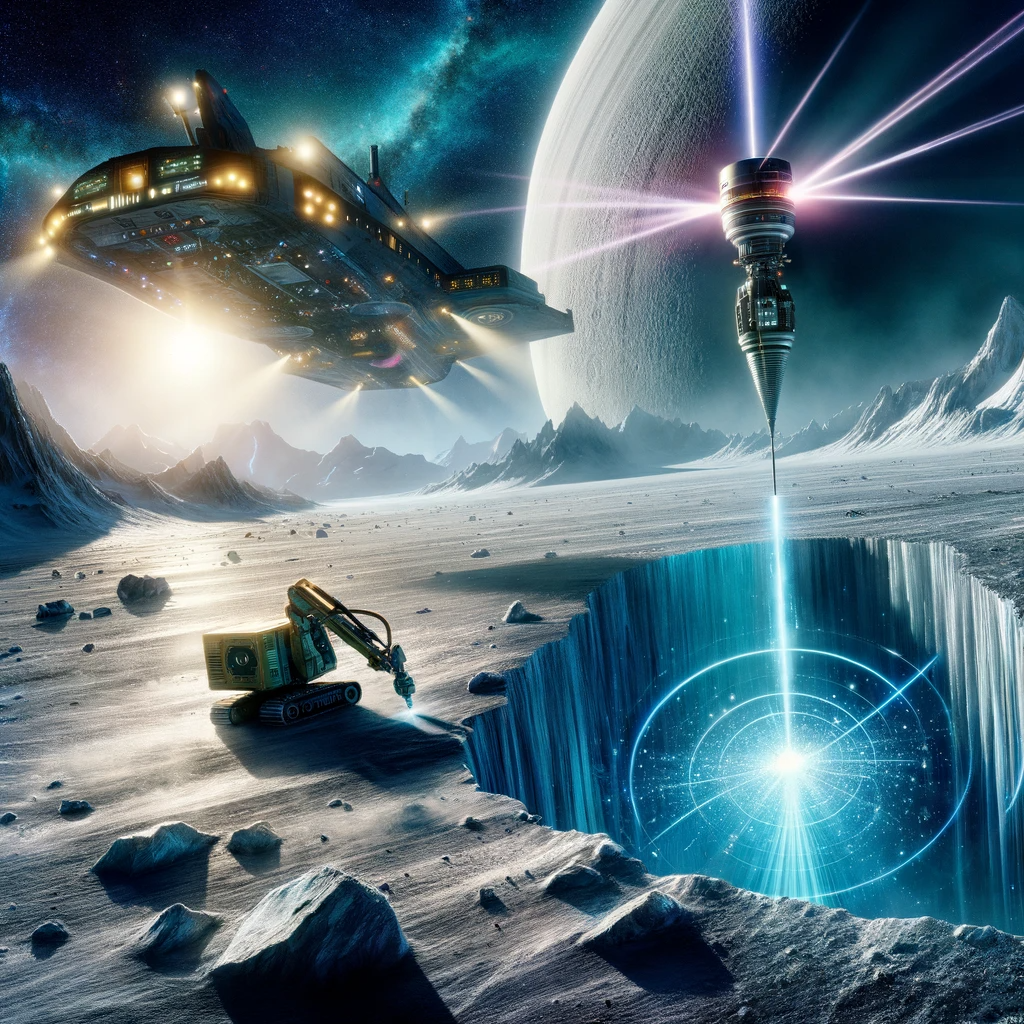
Quasar Navigation and Communication System (QNS)
The QNS aboard the Cosmic Galactic Cruiser (CGC) represents a pinnacle of technological mastery in space navigation and communication. Utilizing the signals from up to seven quasars, captured by specially aligned telescopes on the CGC, the QNS precisely calculates our position in the vastness of space. This advanced system leverages the unique and consistent emissions from these distant celestial objects, allowing for unparalleled accuracy in navigation beyond the solar system.
In addition to its navigational capabilities, the QNS incorporates cutting-edge quantum entanglement technology to facilitate instant communication across vast distances. This quantum communication enables real-time interactions with Earth, HF aboard his “Millennial Eagle”, the Voyager probes, and other entities within and beyond our solar system. By transcending the limitations of light-speed delay, the QNS ensures that the CGC and its missions remain in seamless contact with mission control and allied vessels, enhancing safety, coordination, and the exchange of scientific data.
The Quasar Navigation System exemplifies the CGC’s commitment to harnessing the most advanced technologies for exploration, navigation, and communication, marking a new era in humanity’s journey through the cosmos.
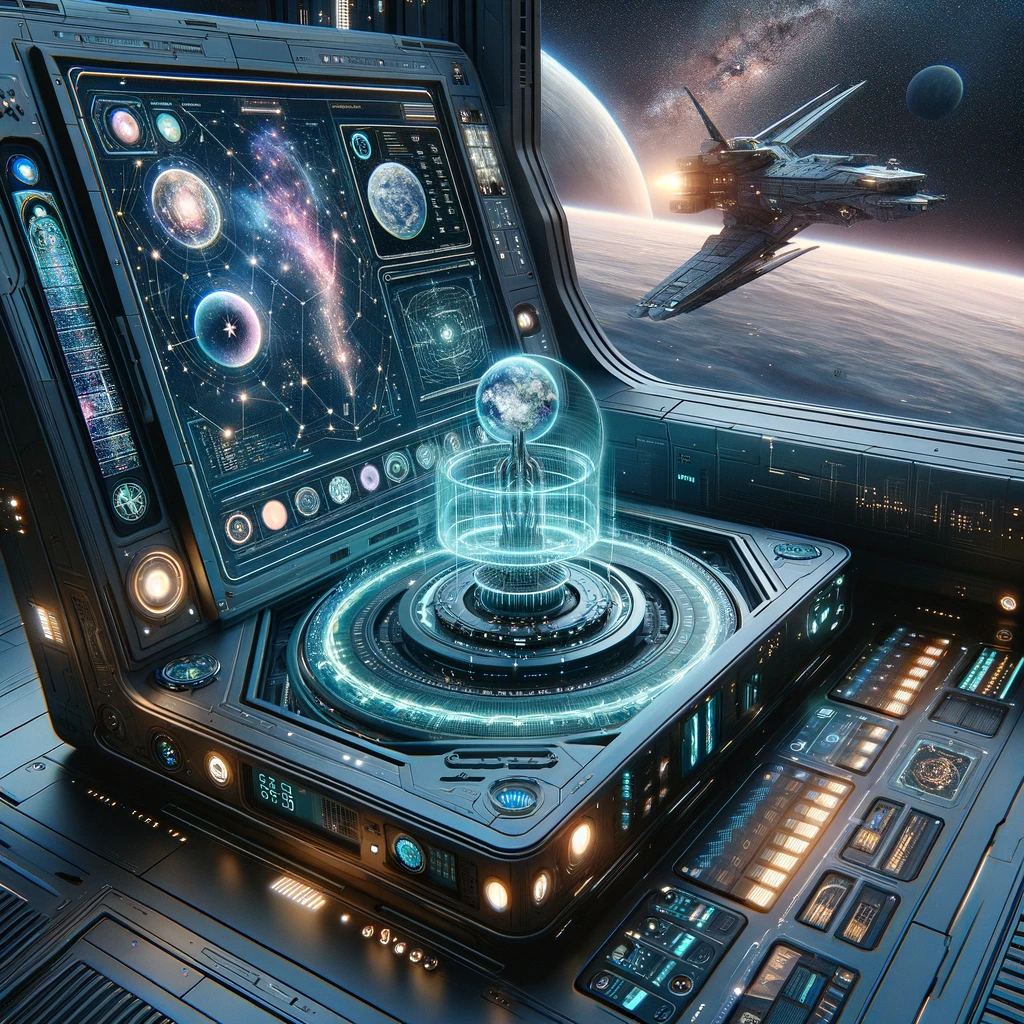
PVRM – Photovoltaic and Radiation Modules
The concept of the PVRM (Photovoltaic and Radiation Modules), proposed by JHR for the CGC (Cosmic Galactic Cruiser) design, represents an innovative solution that enhances both efficiency and functionality in spacecraft technology. These modules serve two essential functions:
Functions of the PVRM:
- Solar Power Generation:
- The modules harness available solar radiation to generate electricity. This is particularly efficient in areas of space where sunlight is directly accessible.
- Solar power generation is a clean and renewable energy source, crucial for the long-term power supply of the spacecraft.
- Infrared Radiation for Energy Dissipation:
- Excess energy, especially from the Stellarator drive, is effectively dissipated through infrared radiation.
- This process helps in regulating the thermal balance of the spacecraft and prevents the systems from overheating.
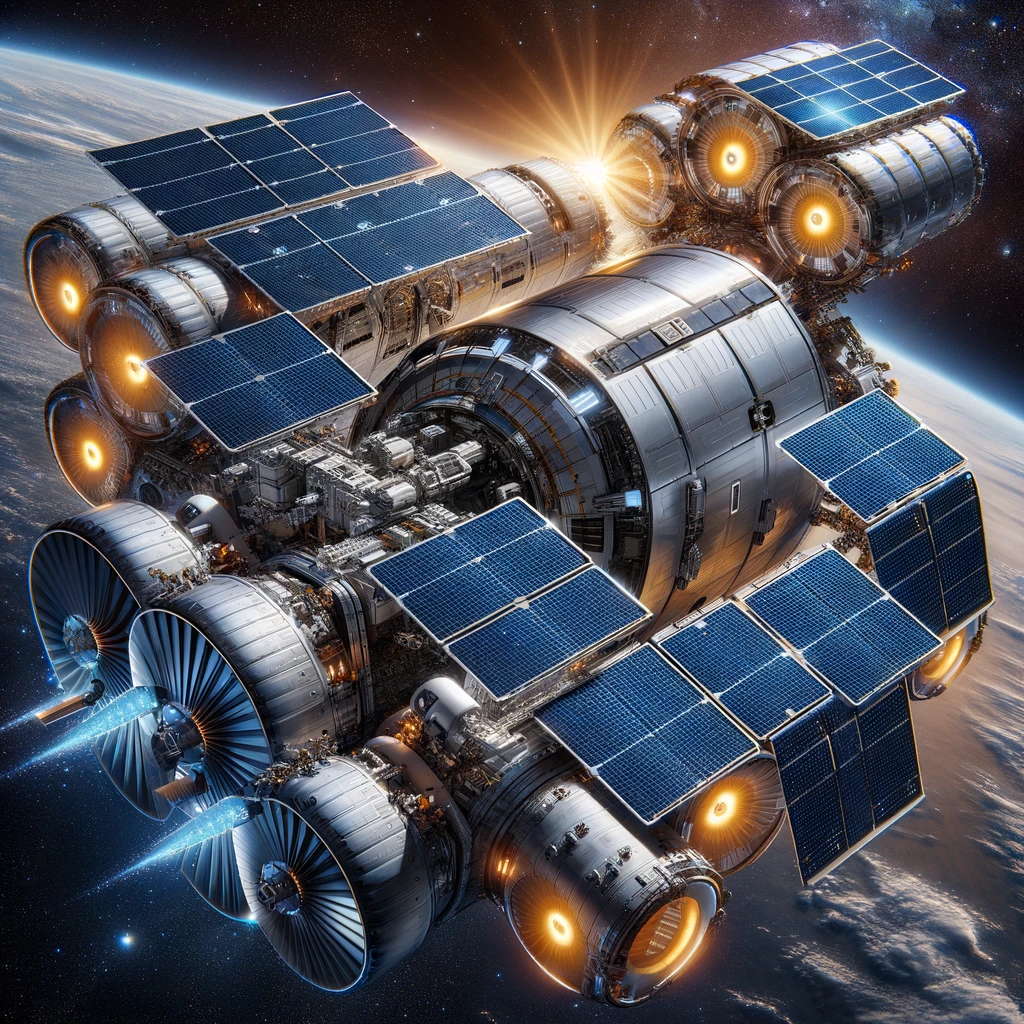
LEDA – Laser Exploration Discovery Analysis
Aboard the CGC we are equipped with a Multispectrum Telescope, which, in conjunction with the LEDA system (“Laser Exploration Discovery Analysis”) developed by LCR and JHR, represents a significant advancement in space exploration technology. The LEDA system enables us to direct laser beams onto the surfaces of celestial bodies from aboard the CGC, and, using the Multispectrum Telescope, conduct precise analyses. This innovative approach allows for detailed examination of planetary compositions, atmospheres, and other critical data. The system was tested on Sedna, where it yielded exceptional results, demonstrating its capability to enhance our understanding of the cosmos through direct, high-resolution observation and analysis.
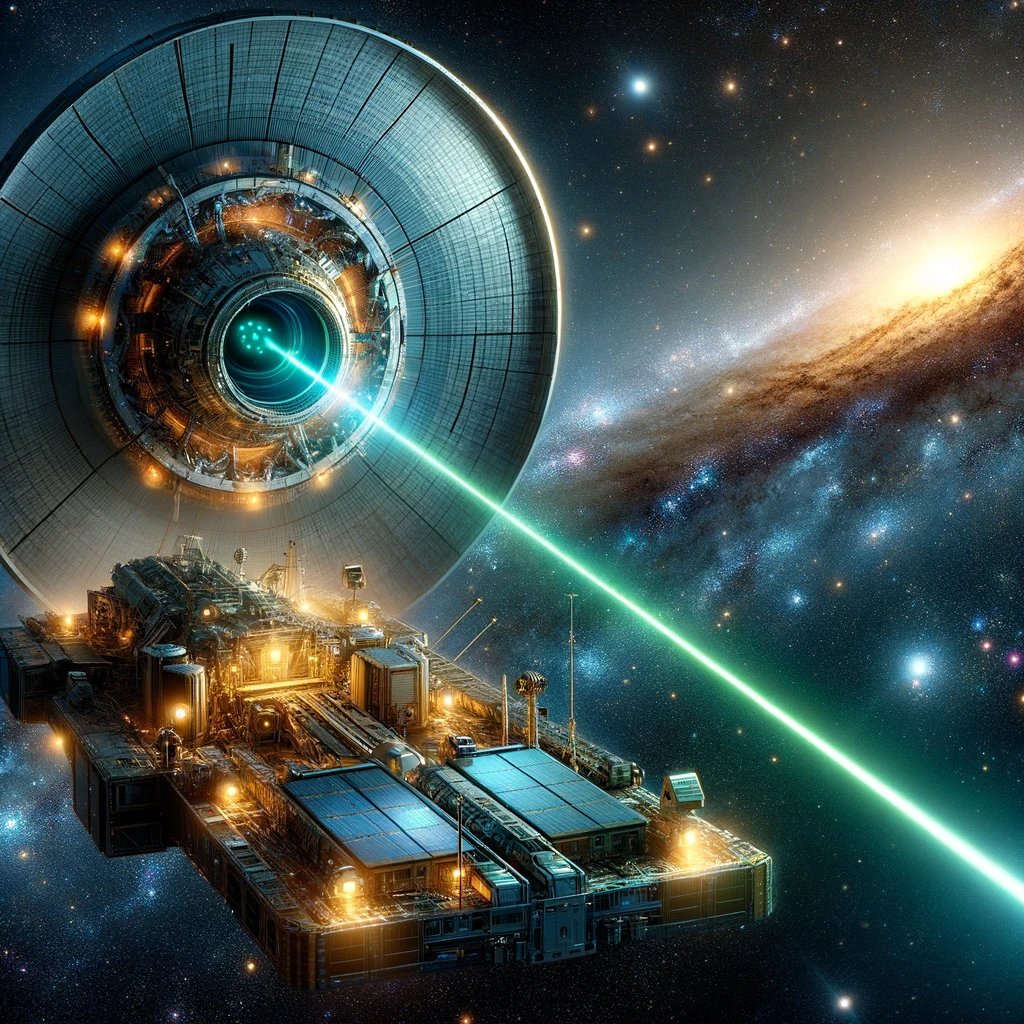
Holodeck and DSGIH-Projector
The CGC is equipped with a state-of-the-art Holodeck, located within the inner “Challenger” ring, which significantly enhances the crew’s training and recreational options. This advanced holographic environment is capable of simulating a wide range of settings, from Tennis Courts and Football Stadiums to the iconic ” Ally Pally” for darts or fencing pistes. The versatility of the Holodeck extends to simulating training environments on celestial bodies, complete with accurate gravitational forces, providing an immersive and realistic preparation experience for the crew.
In addition to the Holodeck, the CGC also features a mobile DSGIH projector (“Digital Sophisticated Generator for Images and Holograms”). This portable device can be brought on landing missions, offering the ability to project detailed images and holograms in various settings outside the cruiser. Whether for scientific analysis, mission planning, or recreational purposes, the DSGIH projector adds another layer of versatility to the CGC’s technological capabilities.
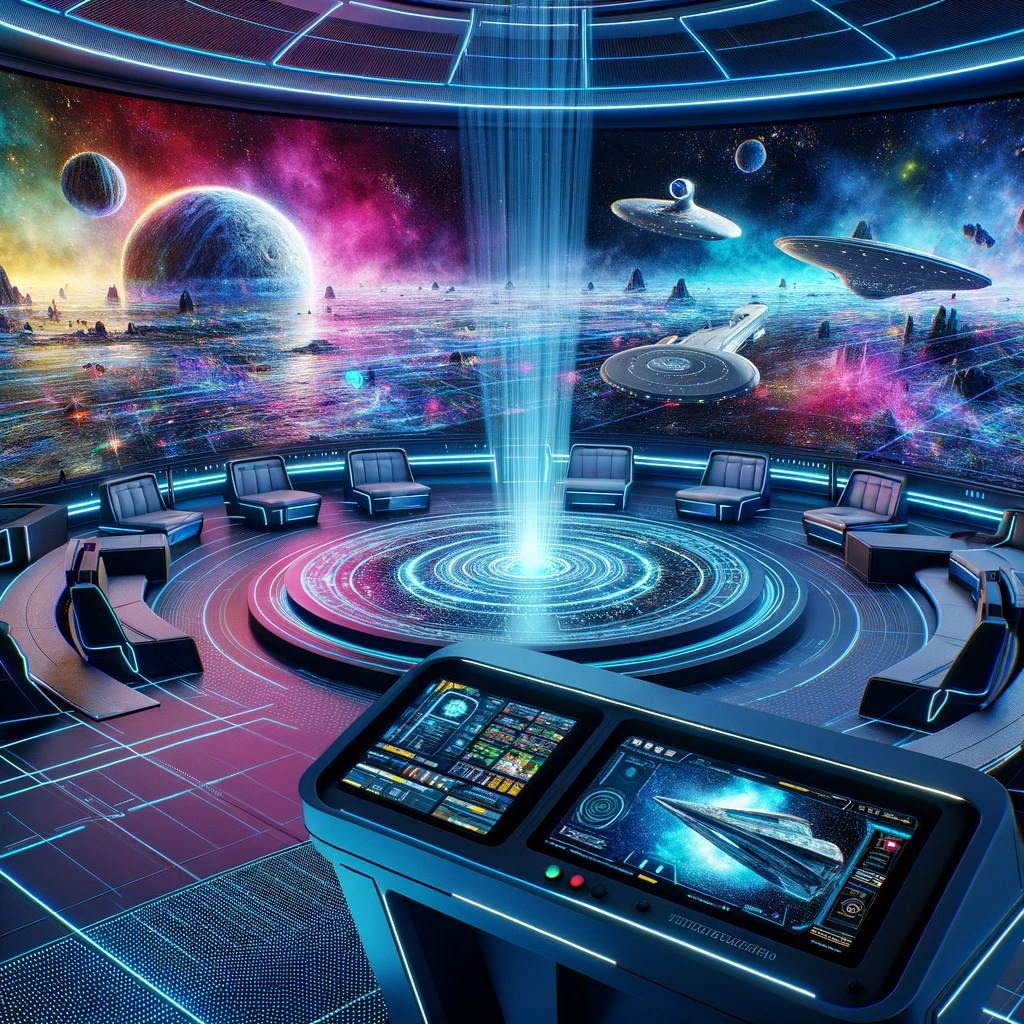

KR and his krBOT Wheelchair
KR and his “krBOT” represent a significant technological advancement aboard the Cosmic Galactic Cruiser (CGC). The krBOT is a highly adaptable, futuristic wheelchair designed to swiftly integrate necessary functions for a wide range of activities, both onboard the CGC and during off-ship missions. Whether it’s for collecting samples, exploring new terrains, or even racing on the Martian surface, the krBOT’s versatility is unparalleled.
Equipped with advanced sensor and control technologies, the krBOT can autonomously navigate through diverse environments, making it an indispensable tool for exploration and daily activities alike. It also incorporates our Quasar Navigation System (QNS) for precise positioning and communication, ensuring that KR can undertake his duties with efficiency and safety, regardless of the setting. This integration of cutting-edge technology underscores the CGC’s commitment to innovation and adaptability in the face of the unknown.
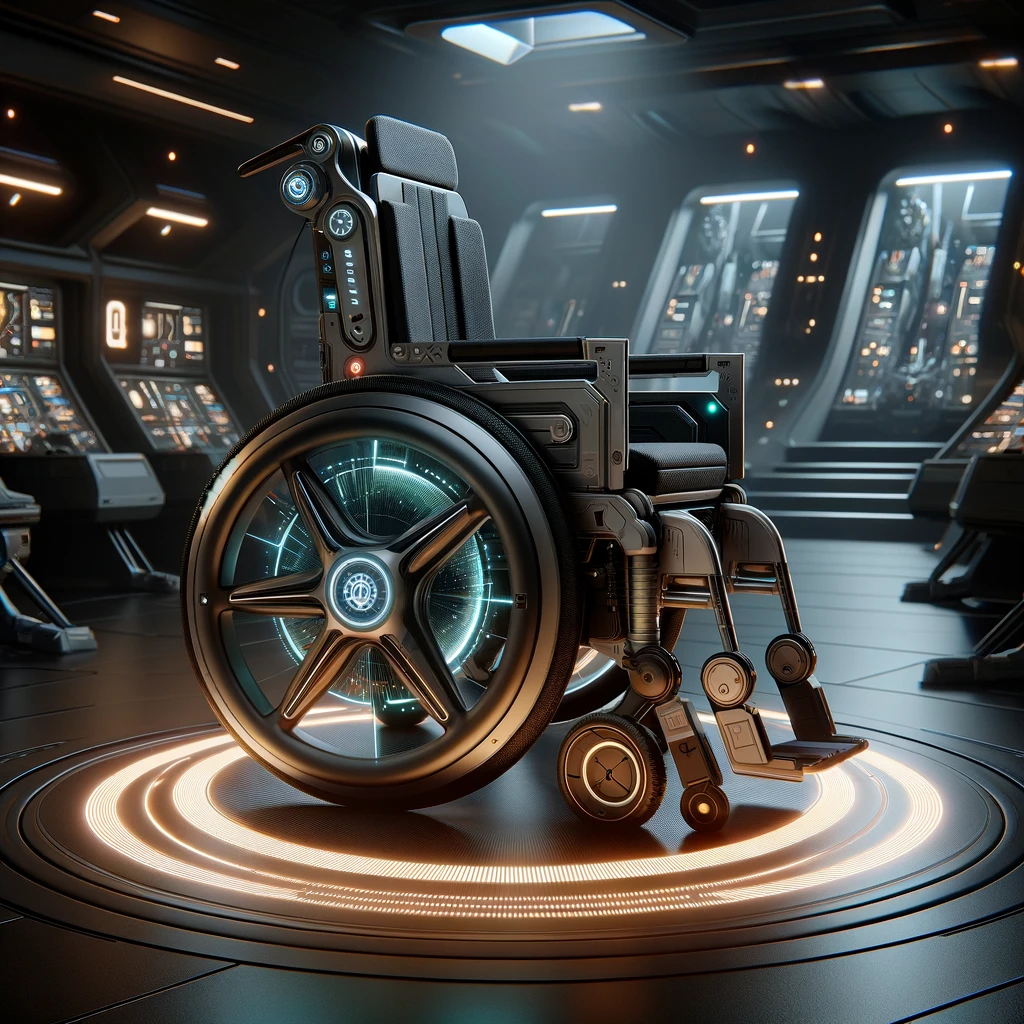
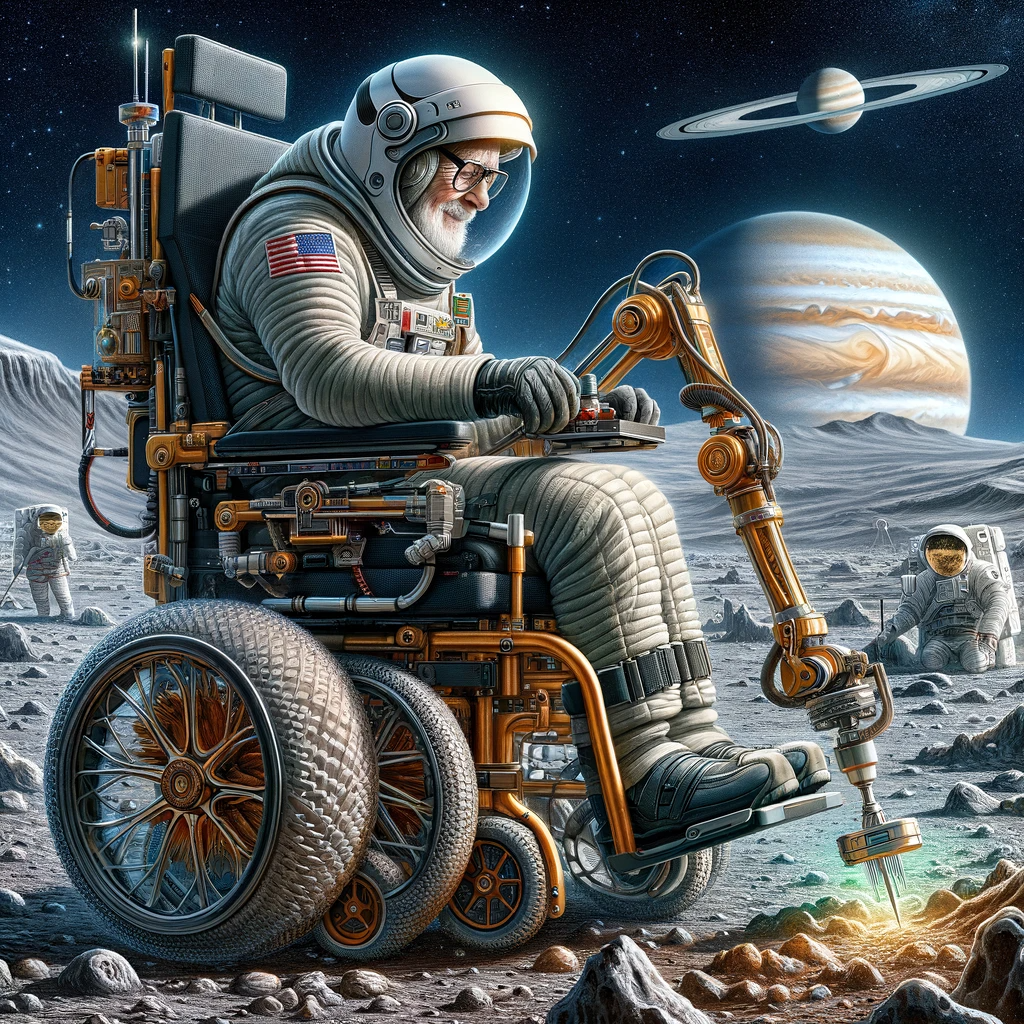
QUIE: Our Quantum Intelligence Expert
Meet QUIE (Quantum Intelligence Expert), the pinnacle of quantum computing technology aboard the CGC. QUIE is a state-of-the-art mobile quantum computer, boasting an impressive 16,384 qubits, encapsulating the cutting-edge of computational capabilities in the cosmos.
Quantum Battery: The Powerhouse
At the heart of QUIE’s unmatched endurance and performance lies its revolutionary quantum battery. Utilizing oxide semiconductor technology, this quantum battery sets new standards in energy storage:
- Energy Density: With a remarkable energy density of 2,400 Wh/kg, QUIE operates at unparalleled efficiency levels.
- Voltage: A stable voltage output of 2.0 V ensures consistent performance across all tasks.
- Cycle Life: Engineered for the long haul, the battery boasts a cycle life of up to 132,000, ready to support countless missions without faltering.
- Memory Effect: Free from the constraints of memory effect, QUIE’s battery maintains its peak capacity throughout its extensive lifecycle.
- Self-Discharge Rate: Exceptionally low at under 1% per month, ensuring QUIE is always ready for action, even after periods of inactivity.
The Role of QUIE
QUIE is not just a marvel of quantum computing; she is an integral part of our journey towards uncovering the mysteries of the universe. From navigating through the uncharted territories of space to analyzing complex data sets from distant galaxies, QUIE’s computational prowess is at the forefront of our exploratory missions.
With her advanced quantum battery and sophisticated algorithms, QUIE represents the harmonious blend of quantum mechanics and artificial intelligence, driving us closer to the answers that lie beyond the stars.
